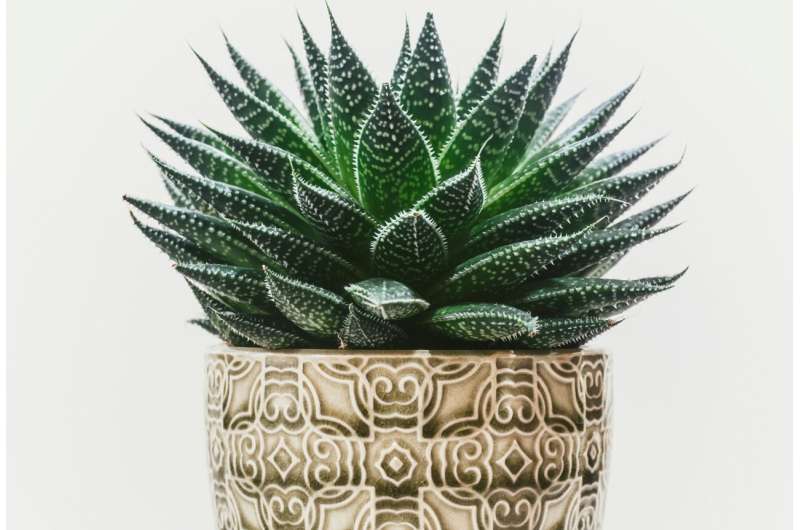This article has been reviewed according to Science X's editorial process and policies. Editors have highlighted the following attributes while ensuring the content's credibility:
fact-checked
peer-reviewed publication
trusted source
proofread
Benefits messaging boosts consumer plant purchasing

A deeper understanding of the relationship between plant benefits, consumer perceptions, and demographic differences is important when shaping marketing strategies for communicating the benefits of plants. In the ornamental plant industry, plant benefits are numerous and diverse; however, their influence on consumer behavior and how that varies by age is not well understood. A new study expands upon the findings from a 2019 study by Hall and Knuth that summarized the research validating the diversity of plant benefits and identified three major plant benefit themes: emotional and mental health benefits, physiological or physical exercise benefits, and social benefits.
According to the new work, published in the journal HortScience, an online survey of plant purchasers was conducted to ascertain the influence of plant benefits messaging on consumer behavior. Three plant attributes, including type of plant, price, and plant availability, were used to distinguish purchasing preferences. To assess plant purchasing behavior, participants viewed a list of 12 different plant types and selected those they had purchased in the past year.
Previous research has demonstrated a difference in perceived plant benefits by age cohort. The researchers build on this work and hypothesize that different types of plant benefit information will differentially influence purchase intention by sociodemographic characteristics. They tested this hypothesis via an online survey to better understand the impact that the knowledge of different types of plant benefits has on LTB, retail outlet choice, and demographic characteristics of plant consumers.
Age influences consumers' purchases in many industries, including the ornamental plant industry. Age cohorts, unlike chronological age, better reflect the impact of life events on purchasing behavior. Baby Boomers, individuals born between 1946 and 1964, have been entering retirement. They are described as having substantial disposable income, which is attractive to marketers. This age cohort buys more floral products than Gen X and Millennials and is often identified as the "core consumer" of plants. However, evidence suggests this may be changing, with younger cohorts expressing more interest in gardening and plants.
The retail outlet where the consumer buys plants is another significant factor because consumers view floriculture crops from different retail outlets differently. Independent garden centers are viewed as having better customer service, more knowledgeable staff, higher-quality products, and more expensive products relative to plants from less specialized retailers. Conversely, home improvement centers and mass merchandisers are viewed as having more competitive prices and/or the lowest priced plants. Given the perceptual differences between retail outlets, it is important to incorporate retail outlets into marketing research related to ornamental plants.
The most common retail locations patronized for plant purchases were home improvement stores, closely followed by independent garden centers. Consumers were grouped according to eight different plant benefit messages that they were exposed to, including physical, emotional, cognitive, social, educational, environmental, financial, and aesthetic benefits.
Although some of the groups (clusters) exhibited similar purchasing behaviors in terms of plant types purchased, price levels preferred, and their preference for rare, common, or moderately available plants, there were just enough differences among groups to be able to distinguish them from other groups. The plant benefits were clearly affecting purchasing behavior, but further study is needed to understand the underlying reasons more fully.
More information: Melinda J. Knuth et al, Effects of Benefits Messaging on Consumer Purchasing of Plants, HortScience (2023). DOI: 10.21273/HORTSCI16993-22
Journal information: HortScience
Provided by American Society for Horticultural Science




















